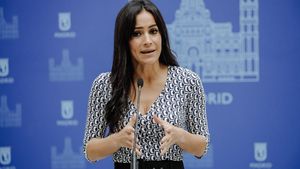A high-stakes diplomatic dynamic is currently underway as Hamas's senior official Mousa Abu Marzook leads a delegation to Moscow, seeking to negotiate the release of hostages and discuss the second phase of ceasefire agreements between Hamas and Israel. This coincides with Israeli Prime Minister Benjamin Netanyahu's visit to the United States, aiming to strengthen ties with Washington amid complex geopolitical tensions.
Marzook's delegation, arriving on February 3, is expected to meet with officials from Russia's Ministry of Foreign Affairs. The anticipated discussions center around two hostages: Alexander Trupanov, who Hamas claims will be released soon, and Maxim Herkin, who remains part of negotiation discussions. According to Marzook, “He will be freed in the first stage, regardless of being a soldier,” indicating the group’s willingness to negotiate as part of their diplomatic gestures.
Trupanov, who has dual Israeli-Russian citizenship, was kidnapped on October 7, alongside family members from Kibbutz Nir Oz. While his mother, grandmother, and girlfriend were released on November 2023 after more than fifty days of captivity, Trupanov’s fate has been uncertain, enveloped amid the fragile ceasefire agreements. “Hamas is ready to make him a top priority,” Marzook asserted, underscoring the urgency of securing his release.
Russian officials are engaged deeply with this issue, with Ambassador Anatoly Viktorov stating recently, “Alexander Trupanov could be freed from Gaza within three to four weeks.” Such promises reflect Russia's central role as they navigated talks aimed at de-escalation and support for Palestinian rights. Previously, Russia has taken stances aligned with Hamas, fostering dialogue to influence peace efforts across the region.
The Kremlin's involvement stands at the intersection of these complex negotiations; Russian President Vladimir Putin has also ordered intensified efforts for Maxim Herkin's release. The Foreign Ministry expressed optimism, reinforcing its commitment to helping facilitate the return of hostages. “Moscow expects the release of hostage Sasha Trupanov from Gaza as part of the deal,” asserted Maria Zakharova, the Foreign Ministry spokeswoman.
While these developments provide some glimmers of hope, they exist against the backdrop of Netanyahu's concurrent visit to the U.S., seen as pivotal for shifting the dynamics within the broader Middle East. Departing for Washington, Netanyahu stated, “The decisions we made during the war have changed the face of the Middle East,” emphasizing his administration's approach to the region’s turmoil. He noted, “I believe with close cooperation with President Trump, we can change this map even more and for thebetter,” indicating high expectations from his meetings with the U.S. President amid continuing tensions with the Biden administration over the handling of the Gaza conflict.
The fragile ceasefire, which has held for six weeks, serves as the backdrop for these negotiations. An extension or second phase to these ceasefires hangs precariously, underscored by the urgent need for hostages' release and de-escalation. Talks promise engagement not only with Hamas but also with other key players such as Iran and the Palestinian Authority, adding layers of potential cooperation and complications to existing hostilities.
Indeed, as the geopolitical chessboard shifts, the involvement of major powers like Russia signals varied interests at play—balancing humanitarian concerns with strategic alliances. The situation remains fluid, featuring near-daily developments as negotiations evolve. A harmonious resolution appears tenuous, yet both sides seem to recognize the stakes.
The world watches as these diplomatic engagements progress, hopeful for positive outcomes for the hostages and broader peace efforts across the fractious region. The interactions between Hamas and Russian officials, coupled with Netanyahu's aspirations to reinforce his relationships with U.S. leadership, may define the contours of peace or conflict moving forward.



